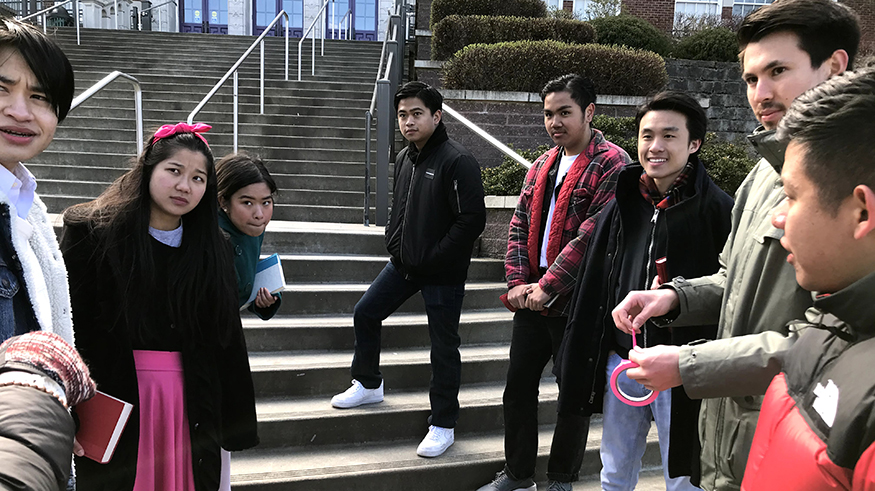
Before the pandemic, students in UW professor Connie So’s Asian American History course had an idea. For the 150th anniversary of the Golden Spike ceremony, which marked the completion of American’s first transcontinental railroad, they wanted to create a film about the integral role of Chinese workers in the building of the railroad, told through the experience of a Chinese immigrant family.
The film was planned as a class project, to be completed in six weeks. No one involved could have imagined the project would later lead students to write and illustrate an ambitious trilogy of graphic novels, also known as comic novellas. The books, including one based on the class project, explore the impact of historic events on Seattle’s Asian American community.
“We call the trilogy the Wong Family Saga,” says So, teaching professor in the UW Department of American Ethnic Studies (AES). “The stories follow the Wong family, loosely based on my family and other families I knew of growing up in Seattle.”
So has been impressed with her students’ determination to share stories that are not often told. “I’m just doing the editing,” she says. “They’ve really taken responsibility for this work.”
From Film to Novella
Han Eckelberg was a UW junior majoring in AES and photomedia when the Golden Spike film was proposed as a class project. He served as director and cinematographer for the film, titled Gum Saan to Golden Spike. It was completed in a rushed six weeks in 2019.
“Getting it all completed in that amount of time, I would truly never do that again,” Eckelberg laughs. “There’s no way.”
Yet Eckelberg and others involved with the project were eager to explore other historic moments for Asian Americans. Learning that the US government had announced plans to belatedly present the Congressional Gold Medal to Chinese Americans who served in World War II, they saw an opportunity to highlight Asian American participation in the war through another film. This time, So created a course specifically for the project so students could devote more time to it.
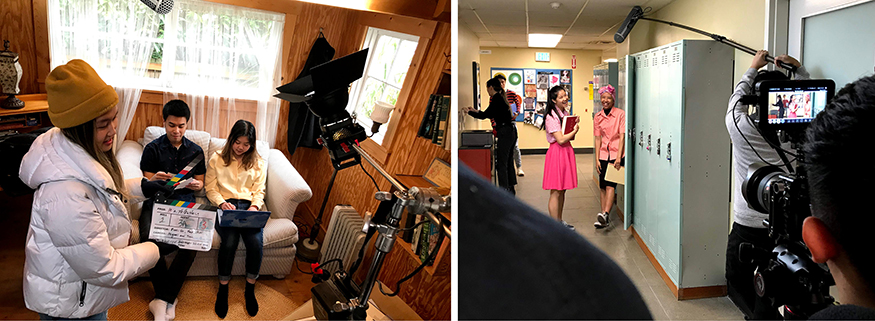
The team completed research, wrote a script, and recruited actors for the film, but halfway through filming, the pandemic arrived and shut down production. Six months went by as the students waited for COVID to retreat so they could complete the film. When that didn’t happen, it was time to pivot.
“I was a senior by then,” recalls Eckelberg, who graduated in 2021. “That unfinished project was like some cloud or shadow hanging over those of us who’d worked on it. We felt we had to get it done but we didn’t know how to transition. We decided to turn it into a comic novella.”
Some members of the original team stayed with the project, enlisting other AES students with illustration skills to join them. Among them was Caroline Natsuhara, a double major in AES and art. “I was excited to contribute to a project that combined my majors,” Natsuhara says, “and to be part of a project that I felt was impactful and meaningful to the Asian American community.”
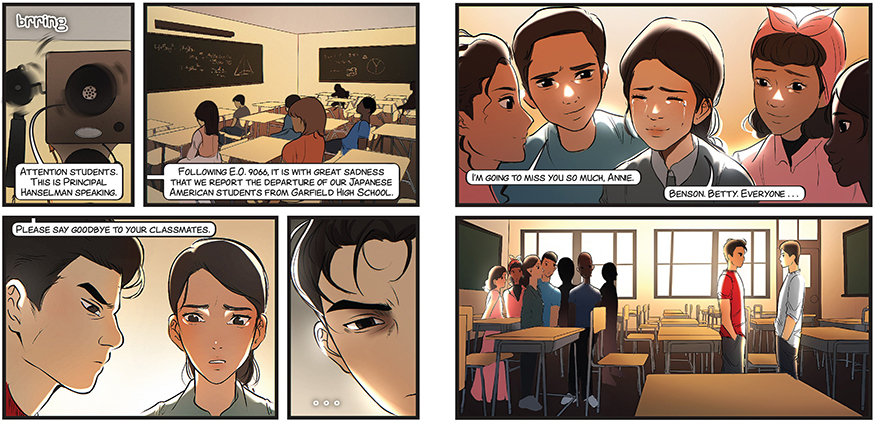
Eckelberg rewrote the film script to fit the graphic novel format and developed the overall design. He created storyboards from which the artists illustrated individual panels for the comic novella, titled In a Yellow Tone.
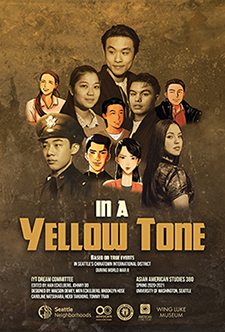
In a Yellow Tone follows fictional students Cyman Wong and Collette Chang, who discover letters, photographs, and mementos from Cyman’s great uncle that shed light on his life — and the lives of other Asian Americans — before, during, and after World War II. Some of the settings and characters may be familiar to Seattleites. Garfield High School figures prominently in the novella, and Wing Luke, who served in World War II, makes an appearance.
“I’m half Chinese, and taking such a deep dive into this history, I’ve become more connected with my Chinese side,” says Eckelberg. “It’s informed more of my own identity. It’s given strength to who I am and who my ancestors are, and it’s made me feel so in touch with my community.”
In a Yellow Tone was published in 2021, with funding from the Seattle Department of Neighborhoods and additional support from OCA Asian Pacific American Advocates of Greater Seattle, Chinese American Citizens Alliance, and Wing Luke Museum. The book will be provided to Seattle public schools next spring, and South Seattle College has assigned it in one of its courses.
Continuing the Trilogy
Completing In a Yellow Tone was a huge accomplishment, but many of the students weren’t done, including Eckelberg, who is now a graduate student in Communication Leadership in the Department of Communication. The first film he’d worked on as a class project, Gum Saan to Golden Spike, was so rushed that it had not been possible for all settings and clothing to be historically accurate. He felt that he could address those issues by translating that film into a comic novella as he’d done with In a Yellow Tone.
“That’s the greatest thing about the comic novella format,” Eckelberg says. “We can now portray these characters in the correct and appropriate environment that they deserve to be in.” He worked with several of the same illustrators and anticipates the comic novella version of Gum Saan to Golden Spike will be published this spring.
...Taking such a deep dive into this history, I’ve become more connected with my Chinese side. ...It’s made me feel so in touch with my community.
Other students, including Natsuhara, are working on a third book to complete the trilogy. Their focus is the impact of large public projects — the Kingdome in the 1970s and recent light rail and mega-shelter projects — on Seattle's Chinatown International District. The novella captures how resistance by Asian Americans and others has led to mitigation of negative impacts.
“A lot of young Asian Americans don’t seem to know that Asian Americans have been fighting and resisting for a very long time,” says So.
That book, KingDOOM, should be completed by fall 2023, again with support from the Seattle Department of Neighborhoods. Publication was originally planned for this spring, but some events mentioned in the book are still unfolding. “We can’t finish the book until we see what happens,” So says.
The students look forward to sharing the trilogy with more readers.
“I hope that people who don’t know about Asian American history read the books and learn,” says Natsuhara. “I hope folks in the AAPI community read them and feel seen or heard. And I hope that students who study these fields, like I did, feel inspired to tell their own stories.”
In a Yellow Tone is currently available at OCA-Asian Pacific Advocates of Greater Seattle. Contact OCA-Greater Seattle for more information. Copies are also available at the Wing Luke Museum, in its on-site Museum Marketplace.
The film version of Gum Saan to Golden Spike can be viewed on Wing Luke Museum’s YouTube channel.
More Stories

A Healing Heart Returns
In February, the UW Symphony will perform a symphony that Coast Salish elder Vi Hilbert commissioned years ago to heal the world after the heartbreak of 9/11. The symphony was first performed by the Seattle Symphony in 2006.

A "gesture" to jump-start careers
To prepare students for professional success, the UW College of Arts and Sciences offers “gesture,” a mock startup company where student interns gain skills that employers seek.
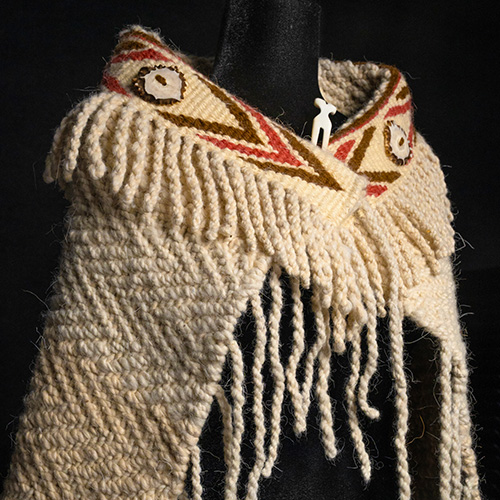
Coast Salish Traditions are "Woven in Wool" at the Burke
A Burke Museum exhibit, co-curated by Coast Salish weavers and Burke curators, highlights the importance of weaving to Coast Salish communities.
